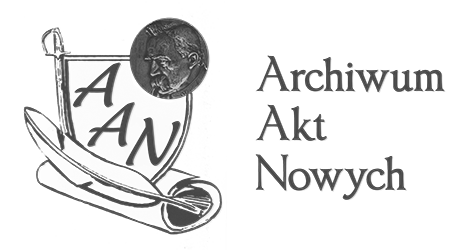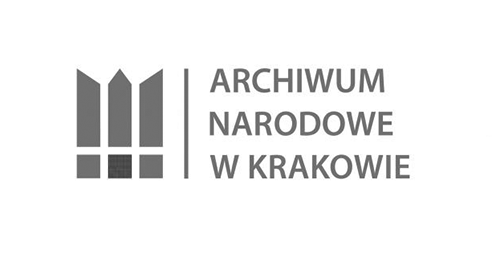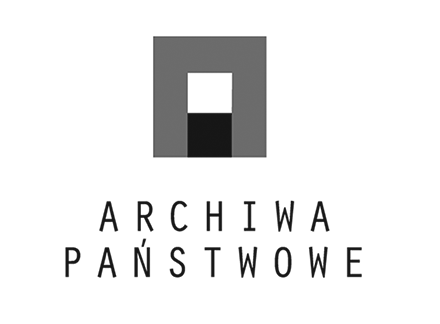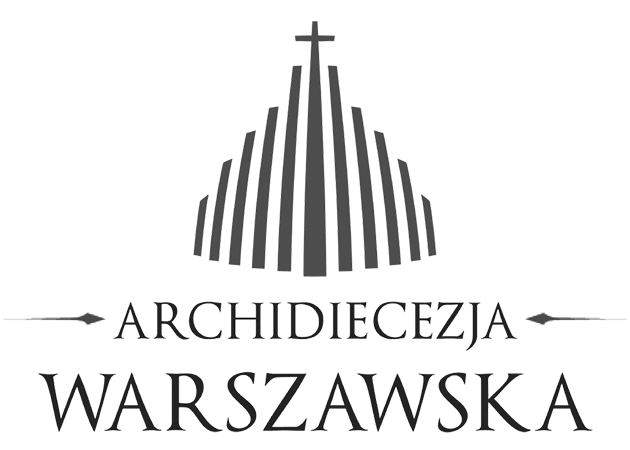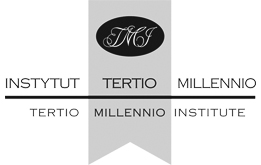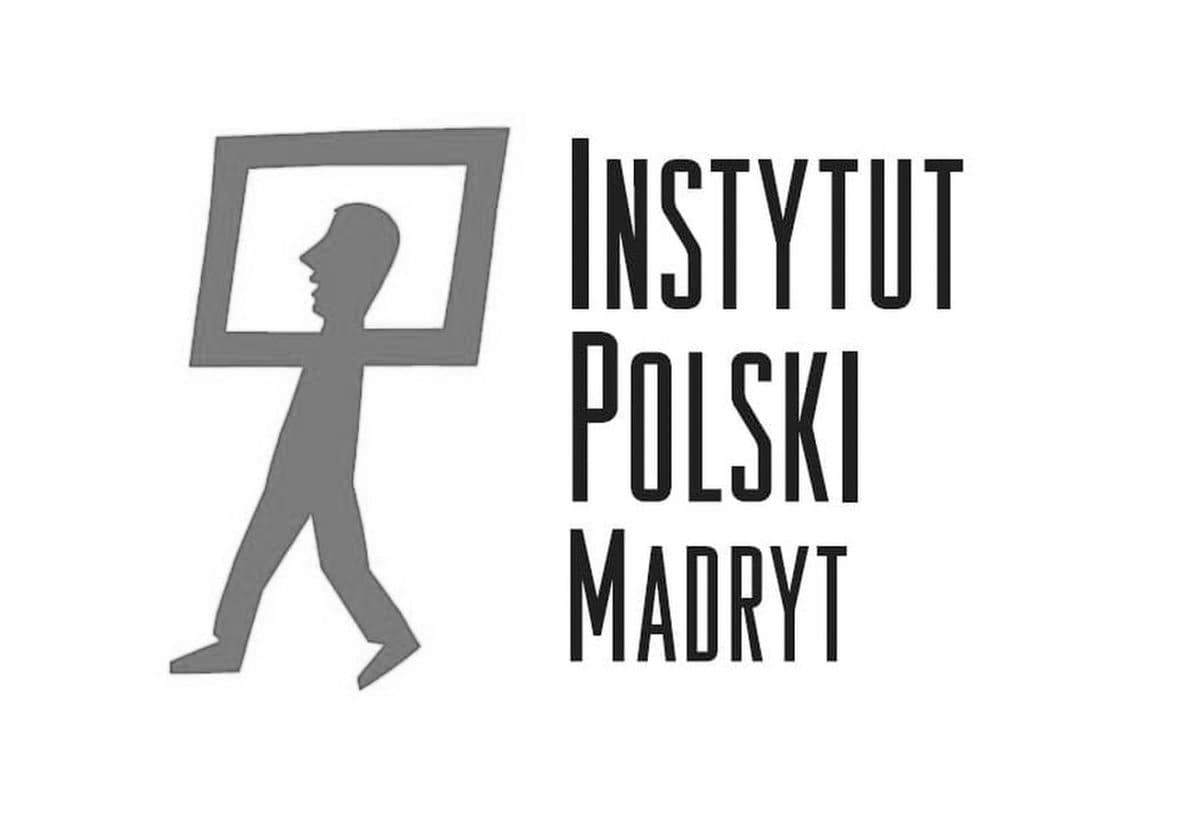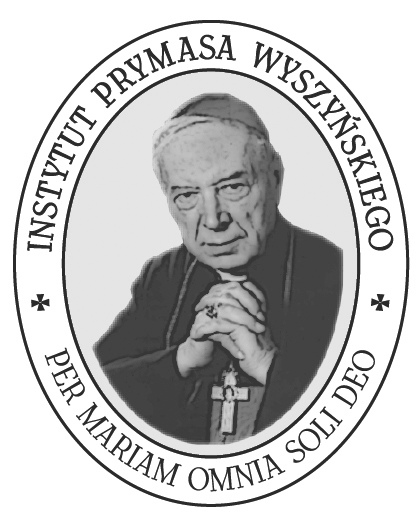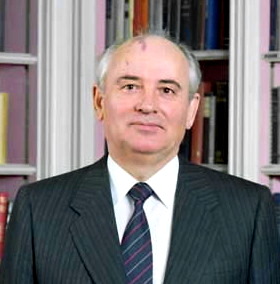Two lungs of Christianity? John Paul II and Eastern Europe.
He looked upon the Eastern Rite Churches with concern, but also with hope. He saw in Eastern Christianity not an alternative to Rome, but as its complement, its "second lung". However, that was not enough for the other side of the dialogue.
John Paul II handing over a copy of the icon of Our Lady of Kazan to the Orthodox Christians, 25.08.2004, photo: Paolo Cocco/AFP/East News
Drag timeline
22 October 1978
Inauguration of the pontificate and homage of the Cardinals, during which John Paul II honoured in a special way the head of the Ukrainian Greek Catholic Church.
13 May 1981
Attempted assassination of the Pope.
1 December 1989
Meeting between John Paul II and Mikhail Gorbachev, President of the Soviet Union.
June 2001
Apostolic Journey of John Paul II to Ukraine.
August 2004
John Paul II's handing over of the icon of Our Lady of Kazan to the Orthodox, through Cardinal Walter Kasper.
John Paul II turned his gaze to the East of Europe very often. This direction was extremely important to him as the Pope from Poland, a country lying on the very border of the cultural and civilisational division into East and West; a Slavic country, lying behind the Iron Curtain and historically linked to the lands of Eastern Christianity.
He had been concerned about the fate of Roman Catholics remaining in the Soviet Union long before he became the Pope. Suffice it to say that he was ordained bishop by Archbishop Eugeniusz Baziak - the metropolitan of Lvov, who had lived in Kraków since the early 1950s. Archbishop Baziak, cut off from his own episcopal capital by the political border after the war, worried about the fate of his diocese until the end of his life.
Pope of the East
The election of the Pole to the See of St Peter was widely commented on as a breakthrough, both by surprised Westerners and by Easterners full of hope for change. Not only the Poles saw in him the hand of Providence: "This Pope is a real gift from heaven." - said Alexander Solzhenitsyn commenting in an interview with the BBC on the outcome of the conclave. In the ruling circles of the communist camp, however, it raised concerns about the political consequences for the entire bloc of socialist countries. At meetings of party committees for religious affairs, concern was expressed that the election of the Polish pope had "raised hopes in religious circles in the USSR for survival and development".
The gesture that the newly elected Pope made towards Primate Stefan Wyszyński during the Mass inaugurating his pontificate on 22 October 1978 is widely known. During the so-called homage, John Paul II did not allow him to kneel down, kissing his hands himself. Not everyone remembers that he also treated Cardinal Josyf Slipego, the head of the Ukrainian Greek Catholic Church, in the same way. This gesture was in recognition of the fate of the hierarch himself, who spent 18 years of his life in the camps, but also of the Church under his authority.
Its roots go back to the Union of Brest (hence the name "Uniate Church") concluded in the First Polish Republic in 1596, by virtue of which the Orthodox inhabitants of the country recognised the supremacy of the papacy while preserving the Eastern liturgy. The Moscow Orthodox Church accepted this act as hostile and has not changed its attitude up till now. In the 19th century, during the partition of Poland, the Orthodox Church was liquidated and persecuted in the Russian partition, and until World War II it survived only in what is now western Ukraine. In the Soviet Union it was unable to function either - after the arrest of the hierarchs and the staged "unification" with the Orthodox Church in the 1940s, all pastoral activities of the Greek Catholic Church had to move underground.
It is worth mentioning that, although in Poland - as in the Soviet Union - Eastern rite Catholicism was not completely banned, as a result of the "Wisła" Operation in 1947 it was disorganised and deprived of its hierarchy. Special powers to care for Greek Catholics in Poland were then given to Primate Stefan Wyszyński by the Vatican, which, in the light of his cooperation and friendship with the later Pope, certainly influenced John Paul II's attitude to the case of the persecuted Church.
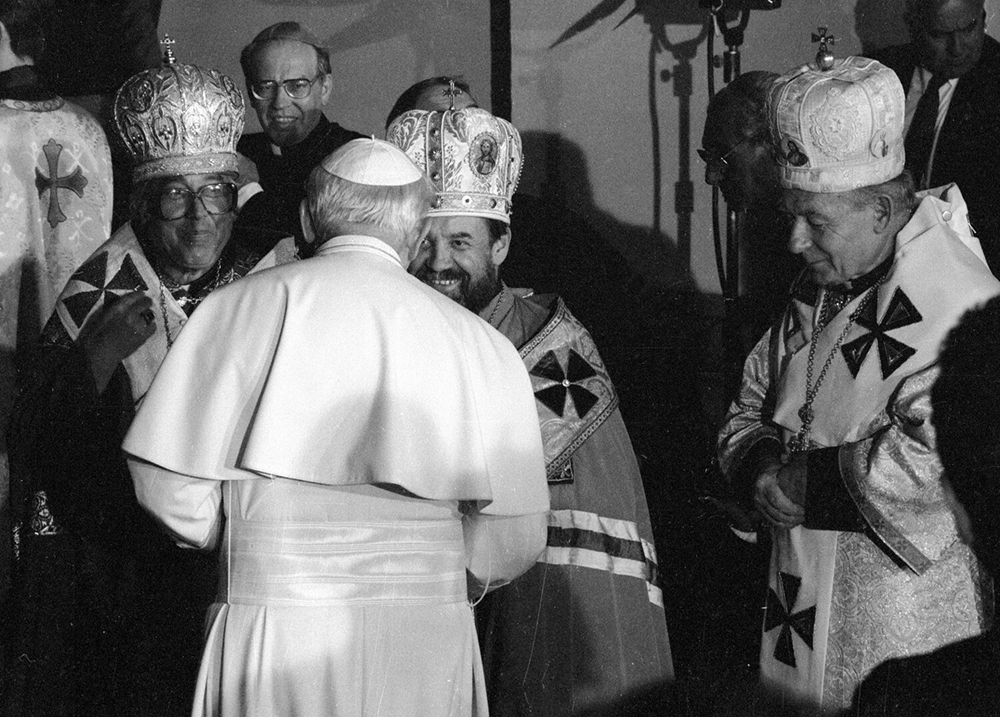
Przemyśl, 02.06.1991, meeting with Greek Catholics during John Paul II's 4th pilgrimage to Poland. Photo: Tomasz Wierzejski/Fotonova
Shortly before his pilgrimage to Poland, in March 1979, Wojtyla sent Cardinal Slipego a historic letter outlining a programme to prepare for the 1000th anniversary of the Baptism of Rus. He interpreted the event, which was the Union of Brest, as one of many attempts at ecumenical reconciliation with the Orthodox Church, rather than, as interpreted by the patriarchs of Moscow, an encroachment by Rome on territory which was not its own canonical territory.
One of the effects of the election of Pole as the Pope was a change in the international policy of the Vatican. Until then it had been rather passive and based on subtle diplomacy. This led to accusations of amicability and a lack of pressure on the countries of the socialist bloc, but it also made it possible to develop tools such as the Final Act of the Conference on Security and Cooperation in Europe, signed in 1975 in Helsinki by 35 states (including the People's Republic of Poland and the Soviet Union). This document placed a very strong emphasis on human rights, including the right to free expression of religious beliefs. The new Pope did not cut himself off from these achievements and made use of them, citing this document among others in his negotiations with the authorities. He also left at the head of Vatican diplomacy Cardinal Agostino Casaroli, who had hitherto been associated with a tendency to compromise in the name of "saving what can be saved" in relations with the Eastern Bloc countries. At the same time, however, he gave Vatican external policy a decidedly more assertive tone and did not shy away from clear formulations that often irritated socialist decision-makers.
First Pilgrimage to Poland
The change was already shown by John Paul II's first pilgrimage to Poland. During this event the Pope's message was not limited to domestic issues. The theme of Eastern Christianity and attitudes towards the Slavic peoples resounded loudly during the visit, to the annoyance of the communist authorities. Perhaps the most explicit element devoted to this theme was the speech in Gniezno, on the Lech Hill, on 3 June 1979. John Paul II dedicated it to the common heritage of the Slavic peoples. Referring to the Solemnity of Pentecost and to the figure of St Adalbert, he said among others:
"Does not Christ want it, does not the Holy Spirit order it, so that this Pope-Pole, Pope-Slav, right now unveils the spiritual unity of Christian Europe, which consists of two great traditions: West and East? We Poles, who have taken part in the traditions of the West for a whole millennium, have, like our Lithuanian brothers, always respected the traditions of the Christian East throughout our millennium. Our lands were hospitable to these traditions, which had their origins in the New Rome of Constantinople.”
These statements, referring to the Christian identity of the nations constituting the atheistic USSR, were so unambiguous that they evoked strong objections in the communist camp. Stanisław Kania, the Secretary of the Central Committee of the Polish United Workers' Party (PZPR), even made a complaint to Bishop Agostino Casaroli, who was responsible from the Vatican for arrangements concerning the course of the pilgrimage with the authorities of the People's Republic of Poland. To his accusations that "we did not agree in such a way", the bishop replied diplomatically that he did not speak Polish, which made it impossible for him to read the content of the papal speeches.
Another point of the pilgrimage - the episcopal meeting at Jasna Góra - remained unknown until recently. During the clandestine deliberations, the Pope openly spoke of his reluctance to the policy of normalizing relations with the communist authorities "at any price," but he also explicitly laid out the intention behind his aforementioned homily in Gniezno: "And yet we reminded them [Western public opinion] that there is a Slavic region, that there is the Czech Republic, that there is the Ukraine, the Lithuanians, that there has been a Christian Russia for a thousand years".
During the proceedings of the Polish Bishops' Conference, John Paul II also touched upon another very important subject, namely he told the Polish bishops that they should prepare the celebrations at Jasna Góra for the Millennium of the Baptism of Ruthenia in 1988, in a way similar to the earlier Millennium of the Baptism of Poland. This event not only succeeded in being organised in the end, but it also led to changes in the religious policy of the USSR and was a pretext for the Vatican to express its explicit demand for the re-legalisation of the Greek Catholic Church.
In the meantime, as early as 1979 during the sessions at Jasna Góra, the Pope bluntly expressed his conviction that this issue - the fate of the Uniates - could not be swept under the carpet in the name of ecumenism. This temptation existed because the Orthodox side considered the very existence of churches formed as a result of the union with Catholics to be a sign of proselytism, i.e. a deceitful luring of the Orthodox faithful to Catholicism, on the rejection of which it made its participation in the interreligious dialogue dependent. John Paul II argued, however, that there could be no question of sacrificing, for example, the Ukrainian Greek Catholic Church, especially since Orthodox Russia had treated it quite cruelly in the past, disregarding the will of its believers, who were forcefully absorbed into its structures:
In the meantime, as early as 1979 during the sessions at Jasna Góra, the Pope bluntly expressed his conviction that this issue - the fate of the Uniates - could not be swept under the carpet in the name of ecumenism. This temptation existed because the Orthodox side considered the very existence of churches formed as a result of the union with Catholics to be a sign of proselytism, i.e. a deceitful luring of the Orthodox faithful to Catholicism, on the rejection of which it made its participation in the interreligious dialogue dependent. John Paul II argued, however, that there could be no question of sacrificing, for example, the Ukrainian Greek Catholic Church, especially since Orthodox Russia had treated it quite cruelly in the past, disregarding the will of its believers, who were forcefully absorbed into its structures:
"Ukrainians should feel appreciated. (...) The Church has no right to deprive them of the historical truth about them in the name of ecumenism. The destruction of the Uniate Church, the administrative destruction, is as much a cry against Russia as it is against Romania."
In dialogue with the Orthodox Church
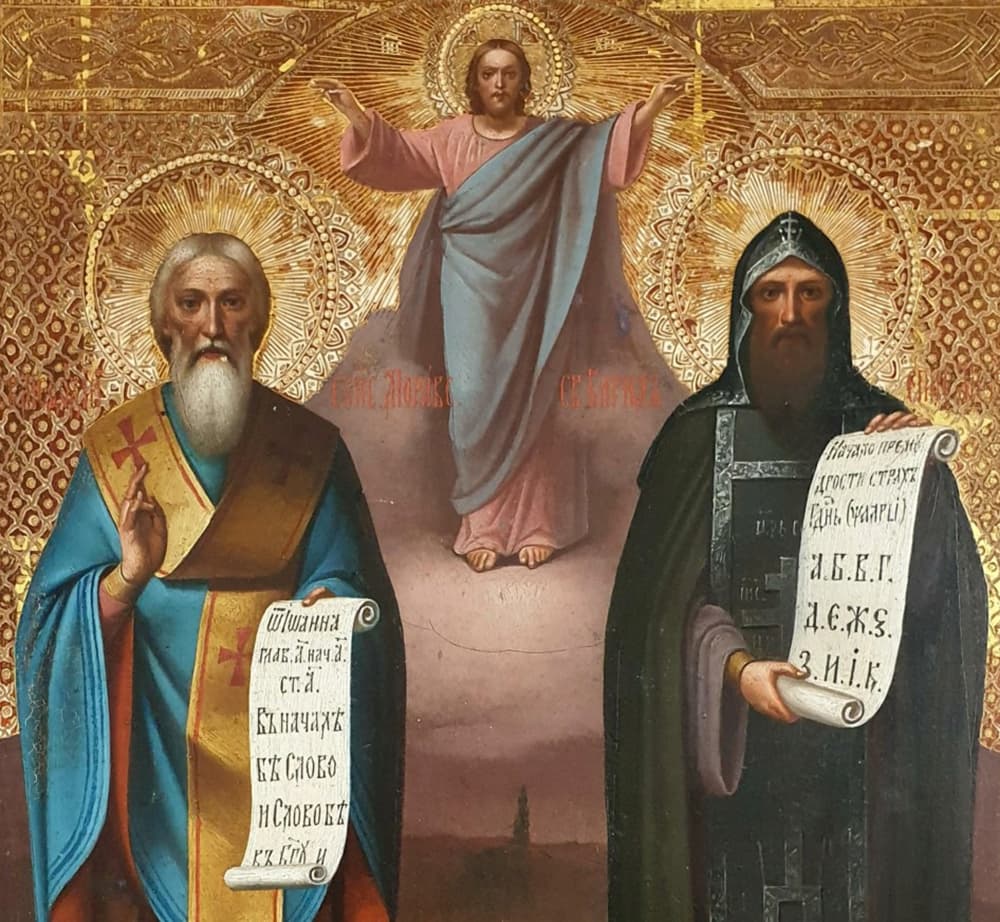
Depiction of Saints Cyril and Methodius on a 19th century Russian icon.
This does not mean, however, that the Polish pope was not interested in dialogue with the Orthodox. In the year of his election to the Chair of Peter, in November 1979, he met with the Patriarch of Constantinople, Dimitrios I., during his pilgrimage to Turkey, and together they established the International Mixed Commission for Theological Dialogue between the Catholic Church and the Orthodox Church as a whole. This is how, in 1980, in Paris he recalled his meeting with Dimitrios and defined his attitude to reconciliation:
"I must also say that my visit to Constantinople has given me much hope. [...] In this environment, which clearly constitutes a great spiritual reality, a complementary reality [to ours]! Well, one cannot breathe as Christians or, better, as Catholics, with only one lung; one must have both lungs, that is, eastern and western. [We hope that the Lord will allow us to see the day when we will be united, and certainly - we can be sure of this - on that day we will look differently at the difficulties that seem so great to us today"
(Message to non-Catholic Christian communities at the Nunciature, Paris, 31 May 1980)
Ecumenism in this dimension consisted not only in meetings of a prayerful nature, but also in working out common positions on doctrinal issues concerning, among others, the concept of the Church and the sacraments of the Eucharist and priesthood. John Paul II repeatedly used the term "sister Churches" and compared Eastern and Western Christianity to the "two lungs" of one Church. However, proselytism and therefore, in the Orthodox view, the existence of Greek Catholic Churches formed through union, continued to be a fundamental obstacle. In the course of the 1990s, the Commission's work on the so-called Balamand Declaration, in which the rapprochement of the Churches and the recognition of the majority of Orthodoxy's demands were made conditional on the acceptance of the existence of the Eastern Catholic Churches, is a case in point. Only the Orthodox Patriarchs of Romania signed this document. Moscow and even Constantinople remained adamant.
In 1980, the Pope proclaimed Saints Cyril and Methodius patron saints of Europe. This was announced in the apostolic letter Egregiae viritus. This was a significant event, since both apostles of the Slavs best symbolise the unity of Christianity through their achievements. The Pope will often refer to these patrons of reconciliation, also in the encyclical Slavorum apostoli of 1985 and in the subsequent apostolic letter Orientale lumen:
"Cyril and Methodius - the glorious example of the apostles of unity - proclaimed Christ in search of communion between East and West, despite the difficulties that even then sometimes opposed the two worlds".
Thus, throughout his entire pontificate, the Pope was faced with a seemingly insoluble problem: on the one hand, he recognised the subjectivity and cared for the welfare of Greek Catholics, while on the other he sought dialogue with the Orthodox Church.
The Fatima call
On 13 May 1981, the attempted assassination of John Paul II took place. The Pope was seriously injured and hospitalized, and his life was in serious danger. He attributed the fact that he eventually survived to Our Lady and linked it to the apparitions at Fatima - especially since he learned the contents of the Third Secret of Fatima, which speaks of the killing of a "bishop dressed in white". He said: "Through Our Lady, my life was given to me anew. I understood that the only way to save the world from war, to save it from atheism, was to convert Russia according to the message of Fatima". This was a reference to the call expressed in the Fatima apparitions for the consecration of Russia, which previous popes had never fully fulfilled. Finally, in 1984, the event took place in accordance with the Fatima wish - in communion with the bishops of the whole world. Four years later, the Soviet Union formally rejected atheism as a state principle and began to restore religious freedom.
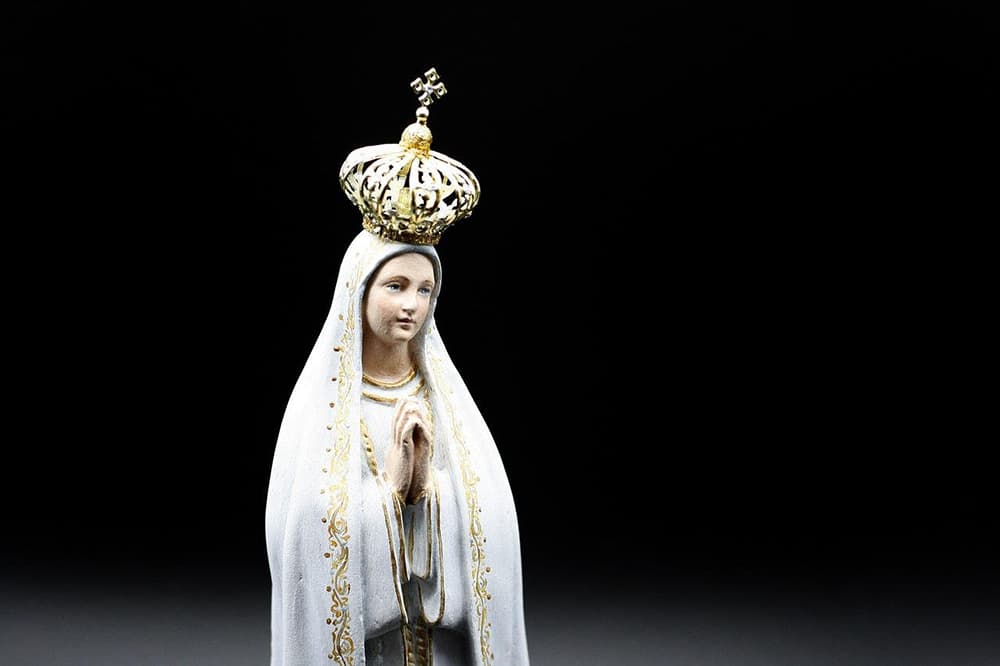
Statue of Our Lady of Fatima. Photo: Pixabay
Winds of renewal
In the second half of the 1980s, the entire old political division was shaking in its foundations. Mikhail Gorbachev, elected General Secretary of the Central Committee of the Communist Party of the Soviet Union in 1985, initiated a policy of economic and political reform and a warming of relations with the West. On 1 December 1989, at a time when the communist system in Poland had already given its last breaths and the wall that had symbolically divided the world had just fallen in Berlin, Mikhail Gorbachev held an official meeting with John Paul II at the Vatican. Among other things, they discussed preserving peace in Europe and expanding the sphere of freedom in the USSR. The media recorded a significant passage from this meeting when Gorbachev addressed his wife: "Raisa, I introduce you to His Holiness, John Paul II, who is the highest moral authority in the world, except that - like us - he is a Slav".
The introduction of religious freedom in the Soviet Union opened the way for the reconstruction of church structures. Already in April 1991, Roman Catholic apostolic administrations were established in Russia, which were transformed into normal diocesan structures in 2002. At a similar time structures were also established in other parts of the Soviet Union. However, apart from the case of traditionally Catholic Lithuania, these communities are still small and belong mainly to the descendants of national minorities.
As early as 1988, the process of reconstruction of the now legally functioning Greek Catholic Church in Ukraine began. Thanks to the underground movement, which had flourished in spite of repression, the hierarchy and institutions of this multi-million-strong community were quickly rebuilt. It was also at this time that life was breathed into other Catholic Churches celebrating liturgy in the Byzantine rite, such as the Byelorussian, Russian and Ruthenian Churches (operating mainly in Transcarpathia). In the times of the Soviet Union their existence was limited to the emigration circles, and after its collapse they could finally function according to normal rules. However, these communities are still small today.
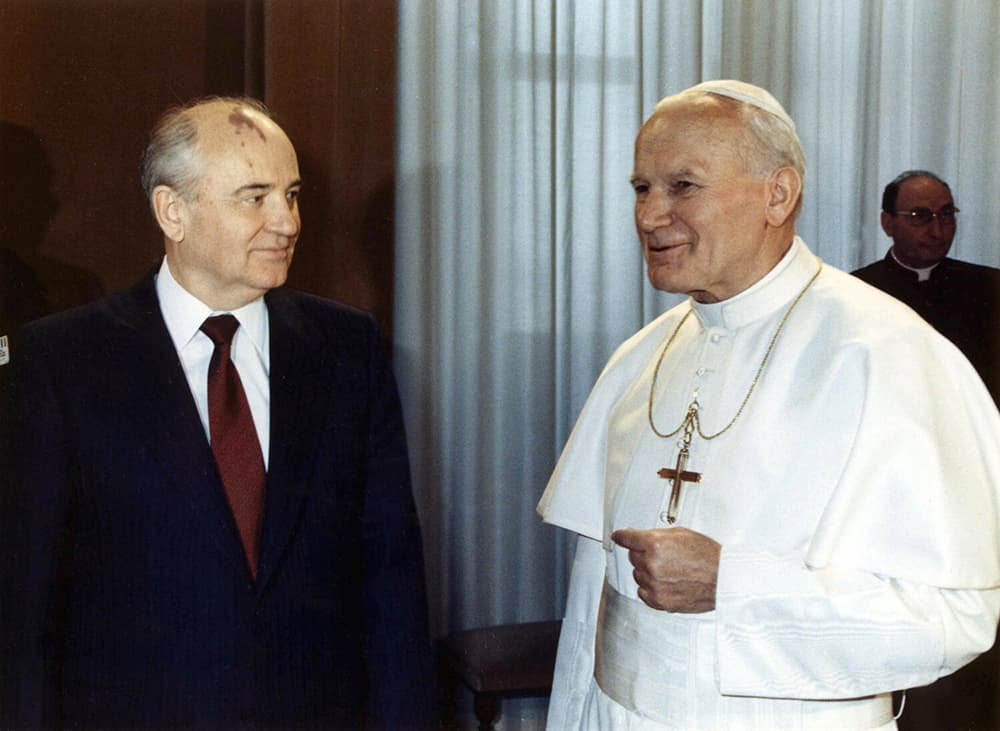
Meeting of Mikhail Gorbachev with John Paul II, Vatican, 01.12.1989. photo: Wojtek Laski/East News
Pilgrim in the East
In addition to building institutions and creating or recreating hierarchies, the Pope wanted to visit the countries of the Christian East. During his 1991 pilgrimage to Poland, he expressed this wish by visiting Przemyśl, which at the time was still part of the diocese that made up the old Lviv metropolis. He also addressed young people from the Soviet Union, who thronged to Częstochowa for World Youth Day in August of that year. Soon after the collapse of the USSR, he visited the Baltic countries, including Catholic Lithuania. In 1999, he went to Romania at the invitation of the Orthodox Patriarch, and during another pilgrimage to Poland (in the same year) he beatified the martyrs of Podlasie, recalling the fate of the Uniate Church. Finally, in 2001, there was a pilgrimage to Ukraine (and also Kazakhstan and Armenia), the only truly great Greek Catholic community.
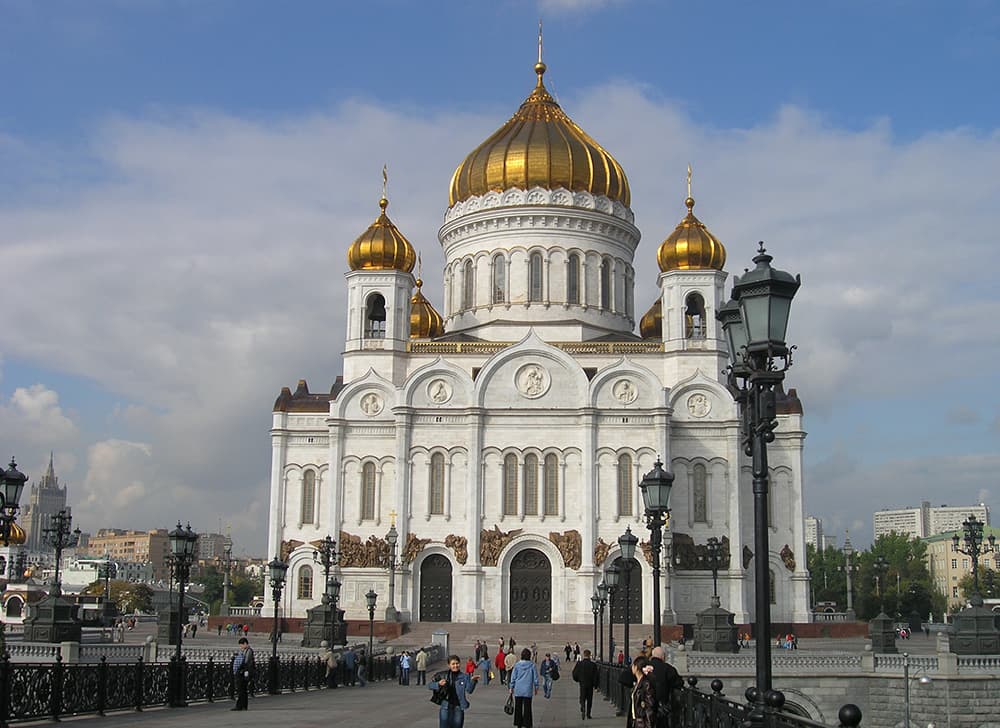
However, despite his great desire, John Paul II never visited Russia. Such an invitation was extended to him in 1988, on the occasion of the Millenium celebrations of the Baptism of Rus. The Pope refused, making the re-legalization of the Greek Catholic Church a condition of his visit. He was later invited again by Boris Yeltsin, President of Russia in the 1990s. At that time, John Paul II did not take up the invitation because he was waiting for it to come from the Orthodox hierarchy. The latter, however, remained reluctant even in years when dialogue seemed to be going in the right direction. This attitude stemmed from opposition to Vatican support for the Greek Catholic Churches and the establishment of a Roman Catholic ecclesiastical administration in Russia. These actions were consistently perceived by the Orthodox Church as an affront rather than an implementation of the right to freedom of conscience or an attempt to regulate the status quo, and ultimately led to a complete break in ecumenical dialogue. The Pope tried to improve relations until the end of his life, but the Orthodox position could not be softened even by such symbolic gestures of goodwill as returning a copy of the icon of Our Lady of Kazan to the Russian Orthodox Church in 2004. And although ecumenical dialogue resumed after the death of John Paul II, successive popes still failed to fulfil his dream of a pilgrimage to Russia.

The rebuilt Cathedral of Christ the Savior in Moscow. Photo by Alex Zelenko/Wikimedia Commons
Sources
Event Place
Choose location...
Fátima, Portugal
Kazan, Russia
Saint Peter's Square in Rome
Istanbul
Kyiv, Ukraine
Keywords
Project implemented by: 

Project co-financed by: 

Patronage: 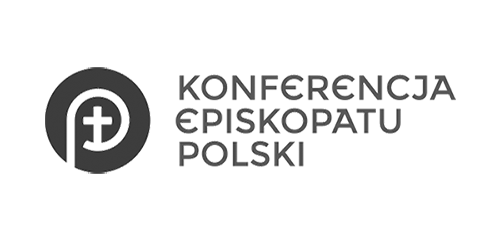

Partners: 